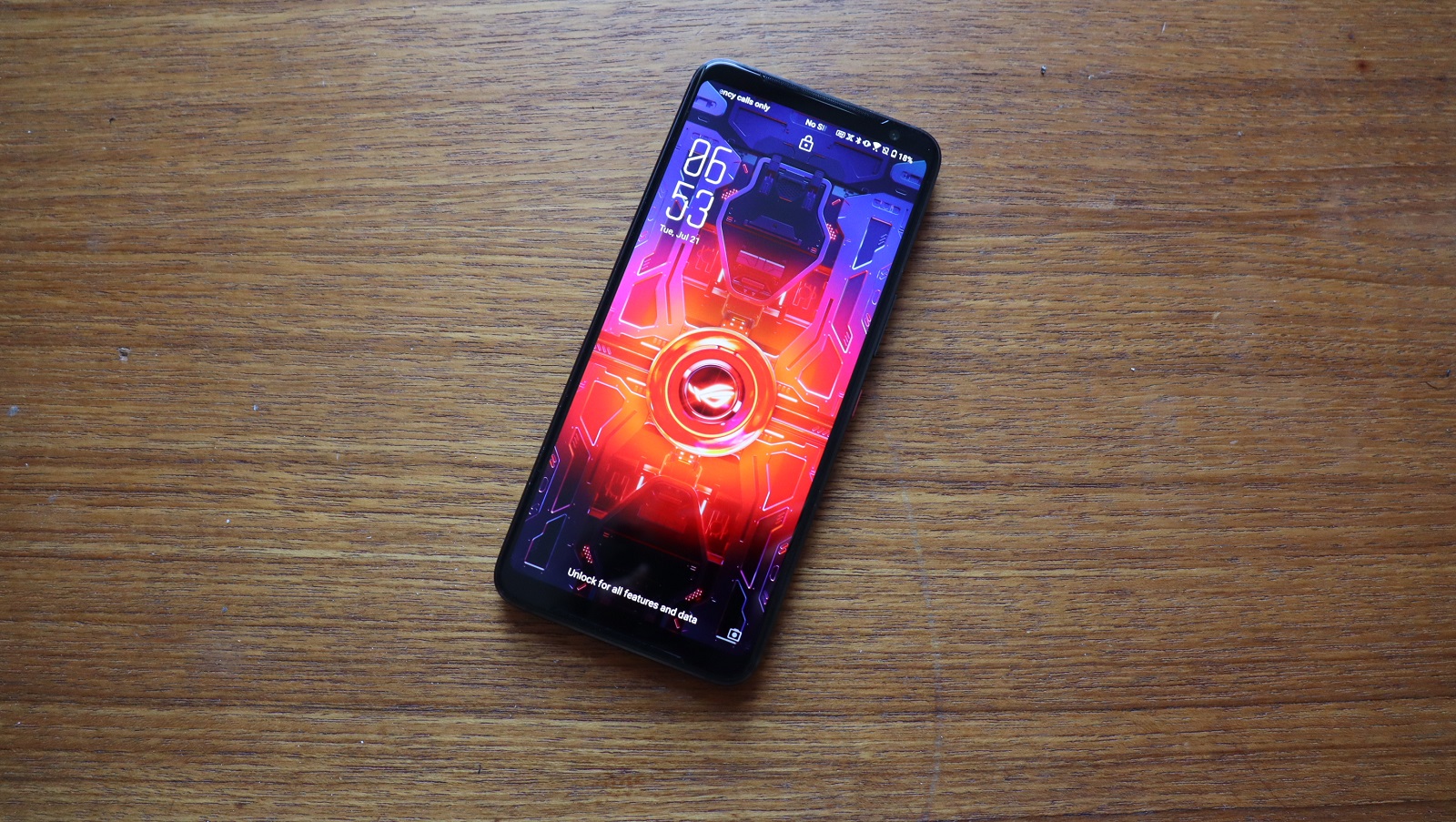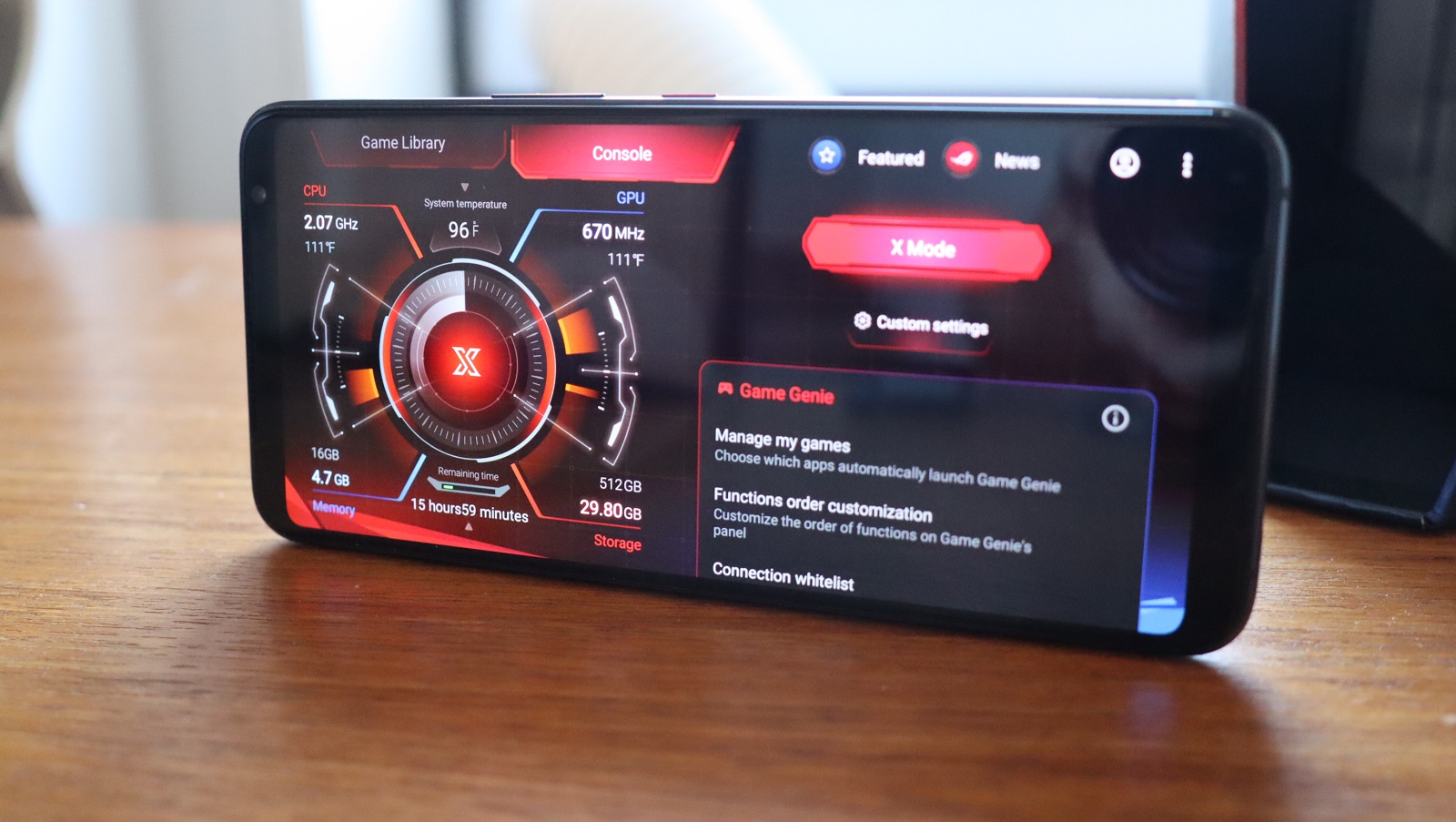Asus ROG 3 is ready for 5G gaming as the first phone with a Snapdragon 865 Plus chipset
The follow-up to the Asus ROG 2 is a high-specced gaming beast

The Asus ROG 3 has officially launched, and it’s the top gaming phone to beat in 2020. But it’s also the first smartphone to pack the Snapdragon 865 Plus chipset, and its benchmarks prove it’s the fastest phone on the market.
The Asus ROG 3 is the latest in a line of top-performing gaming phones, though it’s also transitioned into a more mainstream look, with a seamless back and a few lines instead of the original ROG Phone’s multi-material rear. Don’t worry gamer chic fans, the ROG 3 still has its signature RGB-lit ROG logo in the center.
Snapdragon 865 Plus aside, the phone’s powerhouse specs include an Adreno 650 GPU, 16GB of RAM, 512GB of storage, and a 6,000mAh battery. Sadly, the 3.5mm jack is gone – the designers had to make room for the 5G modem, so something had to go. If you want that headphone jack, though, you can always slot in the AeroActive 3 clip-on fan (included in the box).
The phone’s improvements on the Asus ROG 2 are incremental but plentiful: the 120Hz display has had its refresh rate upped to 144Hz, while the AirTriggers – the touchpads on the side of the device that operate like shoulder buttons when the phone is rotated sideways – have been refined to recognize more gestures and even split the buttons into two sections for an L1/L2/R1/R2 experience.
The camera suite has been improved with a 64MP main shooter, 13MP ultra-wide, and 5MP macro rear camera, while it inherits its predecessor’s 24MP front-facing camera. The ROG 3 also retains the side-mounted USB-C-and-data port where all the peripherals clip in, but it’s also a convenient way to charge the phone while it’s turned sideways to play games.
- Best phone list: will the Asus ROG 3 unseat the Samsung Galaxy S20 Plus?
- Best gaming phone: okay, it's probably a given the ROG 3 will end up here
- Samsung Galaxy S20 Ultra: possibly the only phone with the specs to compete with the ROG 3

Asus ROG 3: a flagship among mid-range gaming phones
It’s no secret that the niche market of gaming phones is mostly made of budget and mid-range devices, mostly from Chinese phonemakers. The Asus ROG 3 is more of an anomaly these days, especially now that Razer has dropped out of the gaming phone race.
But in an interview with TechRadar, Asus explained how the ROG 3 differs: it’s a complete package. Instead of driving price down through economy of scale, Asus’ newest phone offers maximum performance, stated Asus technical PR lead Chih-Hao Kung.
Sign up for breaking news, reviews, opinion, top tech deals, and more.
“Our goal is to provide a complete experience, as much as is possible for us, not just in terms of gaming but also on the more day-to-day side of smartphones,” Kung said.
Take a hard look at other gaming phones, Kung suggests, and ask: what is their build quality? Are they really using glass on the front and back? Do you put a 30W charger in the box? How many frequency bands do they support worldwide? Do they support 5G across continents?
“If you go for a lower price, you sacrifice these things,” Kung said. “Which is fine – there’s [just] different ways to approach it.”
Look for our full interview feature tomorrow as we dive into Asus’ gaming phone strategy for the ROG 3 and beyond.
- Keep up on tech news with the TechRadar newsletter

David is now a mobile reporter at Cnet. Formerly Mobile Editor, US for TechRadar, he covered phones, tablets, and wearables. He still thinks the iPhone 4 is the best-looking smartphone ever made. He's most interested in technology, gaming and culture – and where they overlap and change our lives. His current beat explores how our on-the-go existence is affected by new gadgets, carrier coverage expansions, and corporate strategy shifts.